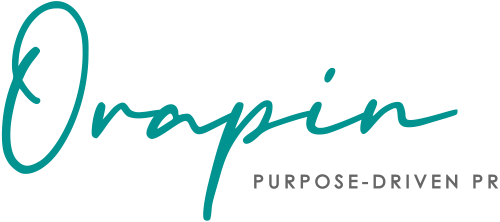 The reality is that people can’t support you if they don’t know you exist or about the impact you make. All organizations need to find ways to consistently communicate with their stakeholders in meaningful ways and the #1 way to do so is through storytelling. Why is storytelling so important? Because audiences connect with stories and stories inspire us to take action – significantly more so than fact-based communication. A study from Carnegie Mellon on the power of storytelling in marketing revealed that recipients of a nonprofit donor letter contributed 118 percent more than those who received a fact-driven letter. A number of articles further support this study’s conclusions, which brings us to our next discussion point: What comprises a story?
The reality is that people can’t support you if they don’t know you exist or about the impact you make. All organizations need to find ways to consistently communicate with their stakeholders in meaningful ways and the #1 way to do so is through storytelling. Why is storytelling so important? Because audiences connect with stories and stories inspire us to take action – significantly more so than fact-based communication. A study from Carnegie Mellon on the power of storytelling in marketing revealed that recipients of a nonprofit donor letter contributed 118 percent more than those who received a fact-driven letter. A number of articles further support this study’s conclusions, which brings us to our next discussion point: What comprises a story?
Once Upon a Time…
There are three key components to any story: a beginning, a middle and an end (just like in all the books you read as a kid). Furthermore, a story should open with an attention-getter, include relatable characters, and inspire an action from the reader.
Writer and storyteller Kimberly Smith offers four suggestions for planning your story:
- Establish your goal: Identify the outcome of sharing the story. What’s the end result you want to achieve.
- Understand your audience: Identity who you want to share the story with. Who will be most receptive to your story? Will the story be relevant to them? (It better be or you shouldn’t be telling it to them. If you aren’t sure, put yourself in your target audience’s shoes to shift your perspective on what’s relevant OR ask around to prospective clients what would pique their interest).
- Know how you want your audience to feel: What emotions do you want your readers to experience? How do you want them to feel or act after reading the story?
- Uncover what will elicit the feeling: What components of your story will allow you to bring out those emotions? What do the characters in the story need to do to bring out a reaction from the reader? What twists and turns or unique, quirky surprises can emerge to engage the reader? What type of language or words do you need to use to inspire a reaction?
Now that you’ve identified your goals and understand WHO you are writing for, WHAT needs to be included in the story and HOW it will be told, you can begin your story research.
A few methods below should help you begin to put your story together:
- Identify internal stakeholders who have interesting stories to share: Start where you have immediate access to information–inside your organization. Talk to your teammates and colleagues to understand the personal connections they have to the organization. Ask questions like:
- What attracted you to work here?
- What is the most enjoyable part of your job?
- What is your mission for your role in the company?
- What inspired you to get involved in a social enterprise in the first place?
Hearing the personal and professional stories of your staff reveals powerful narratives that you can share on your company’s blog as “staff highlights,” for example. In addition, nuggets of these stories can be used if they are interviewed by members of the media–reporters love a good, personal story that humanizes the enterprise.
- Talk to loyal customers: After some internal digging, it’s time to connect with long-standing customers and supporters to hear their stories. Ask questions like:
- How did you hear about my organization?
- What attracted you to become engaged with my organization?
- Why do you continue to buy from/support us?
- What can we be doing better to sustain your interest and loyalty in the future?
- Curate stories about the impact you make
Social enterprises exist to support their people (staff), their customers and to make a social, economic, or environmental impact. Therefore, you have a number of different story angles you can take to curate stories.
You can start by identifying your top 10, 20, or however many loyal customers you want, and create a quick survey that they can complete online to understand their perspective as a supporter. Find out what issues they care about and how your organization can lead the conversation. You can also host a focus group if customers are comfortable being in bigger groups. Or, you can gather this information by calling a handful of your supporters for quick phone interviews.
Not only will answers to these questions reveal key information about how people find out about you and why they love you, but you may learn of a personal story that connects directly to the mission and purpose of your organization–and that nugget of detail is gold for storytelling.
Once you have a list of prospective stories, you can create a blog or story calendar to develop a reasonable schedule that you can commit to.
Storytelling for Social Enterprises
As an organization that is doing work that matters, you have a lot of narrative “fuel” to begin telling your brand story. You have components that other businesses don’t always have:
- A social/community impact
- A meaningful cause that affects communities
- A captive audience dedicated to doing social good
- A reason to celebrate the good work you’ve already accomplished
- A future to discuss what else can be done and how people can get involved to solve a social issue or problem
As Rohan Potdar, documentary filmmaker and storyteller, notes, there are several types of stories to tell based on these mission-driven attributes. You can tell a “feel good” story that shares a positive impact based on work performed by your organization; you can share a story that introduces the social problem at hand–an informative story; you can tell a product story that details the need for your product or service and its benefits; and you can share a personal story that profiles one or a group of individuals who are passionate change-makers in their communities.
It’s All About Relevancy!
We believe one of the most important parts of storytelling is to understand how your story impacts or is relevant to your audience. Without relevancy, your story will not capture attention, prompt readership or inspire action. People want and need to feel connected to your story by reading/hearing about something that is relatable to them. Maybe they relate to a specific character in your story or care about the individuals or entities impacted by your cause; perhaps they are just passionate about local giving. Whatever that relatable, relevant component is, make sure to weave it into your story.
A Few Final Notes…
It’s important to note that while storytelling is imperative to your marketing efforts, data certainly has its place in the marketing mix. Data and statistics are proof points for your emotional-driven statements and claims, so don’t be afraid to sprinkle them into your story when appropriate.
Our recommendation: whenever you make a claim or statement, use data to back it up–remember when your teachers used to tell you this in school? It adds credibility and positions you as a thought leader and trusted resource.
In addition, storytelling can be a challenge for organizations to do on their own because those writing the stories, while well-versed in their own history and progress, can be too close to the organization and can fail to effectively understand their audience and identify and articulate what is truly captivating to readers. Having a third-party communications expert examine your story prior to publishing it is always a good idea. It can be easy to “drink your own Kool-aid” and “talk to yourself” without realizing it.
Finally, storytelling is a constant creation and re-creation of stories. No one story will produce the marketing results you seek, especially over the long-term. You need to continuously be searching for new material, refreshing previous communications pieces, and finding new nuggets of information to craft new stories to help generate awareness for your organizations and connect people to your cause. The good news is that because you are doing work that matters and are making an impact, you have no shortage of stories to tell.
“Great stories happen to those who can tell them.” –Ira Glas
Additional Resources:
Conscious magazine’s “The Power of Storytelling for Social Businesses”
Hubspot’s “Storytelling 101: How to Seize the Attention of a Distracted Audience”
AdAge’s “Escaping the Price War”
Rohan Potdar’s “Four Types of Stories for Social Good Brands”

Rhiannon Hendrickson is the founder and CEO of Orapin, which helps purpose-driven organizations transform their random acts of PR into a strategic, consistent approach that generates greater awareness and impact. She has worked with organizations of all sizes across myriad industries and causes to develop earned media and thought leadership programs that generate awareness, engagement, and, ultimately, support for those that are making a meaningful impact.
